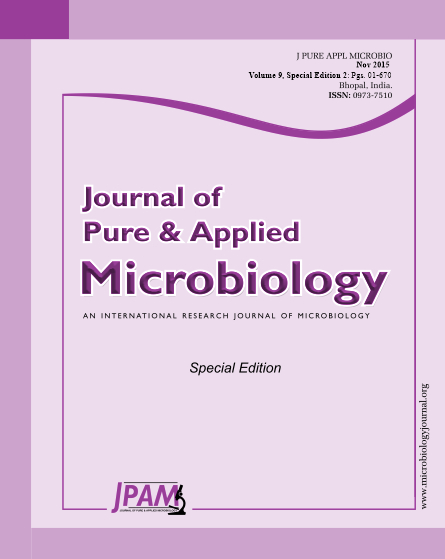To screen and identify both endoglucanase- and xylanase-producing microbes cultivated in bean curd wastewater as the sole medium for potential use in the feed industry, using traditional isolation methods such as hole observation, hydrolysis spot diameter measurement of CMC-Na and Xylan from soils samples collected from farmland. three strains, EM5, SB13, and BL14, showed maximum endoglucanase and xylanase activity. Morphological, physiological characteristics and 16S rDNA gene sequence analyses identified the isolated bacteria as Bacillus megaterium EM5ÿBacillus subtilis SB13, and Bacillus licheniformis BL14. the endoglucanase activity of EM5, SB13 and BL14 cultured in bean curd wastewater medium, reached 20.35±2.28, 102.39±8.76 and 64.73±7.45(U/ml), showing increases of 8.43, 1.37, and 2.29 times, respectively, compared with cultivation in basic medium for three days, and the endoglucanase activity was maintained for 10 days when cultured in beancurd wastewater medium. In addition, xylanase activity in bacteria cultured in beancurd wastewater medium, respectively reached 577.03±21.28, 611.98±18.12, 487.13±11.06 (U/ml), showing increases of 0.37, 0.75, and 0.14 times, respectively, compared with bacteria cultured in basic medium for three days. These studies showed that beancurd wastewater is an adequate medium for the growth of strains EM5, SB13 and BL14 to produce both endoglucanase and xylanase.
Beancurd, Wastewater, Endoglucanase, Xylanase, Bacillus subtilis, Bacillus licheniformis
© The Author(s) 2015. Open Access. This article is distributed under the terms of the Creative Commons Attribution 4.0 International License which permits unrestricted use, sharing, distribution, and reproduction in any medium, provided you give appropriate credit to the original author(s) and the source, provide a link to the Creative Commons license, and indicate if changes were made.


